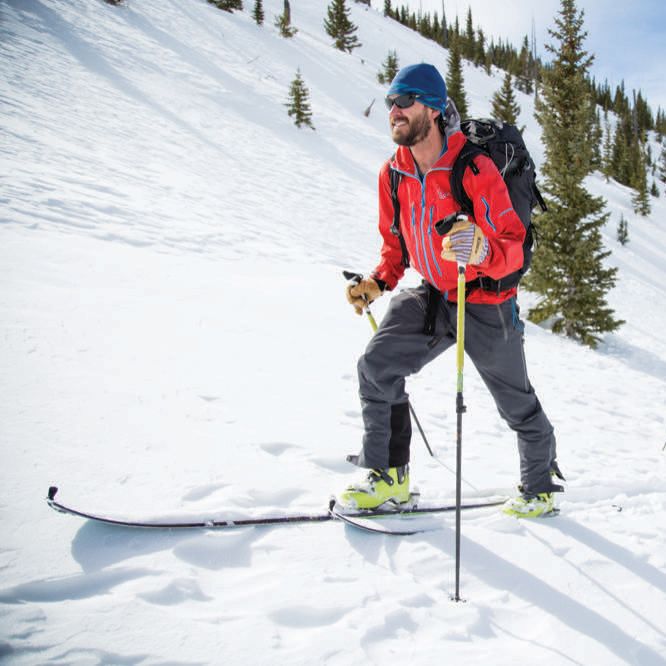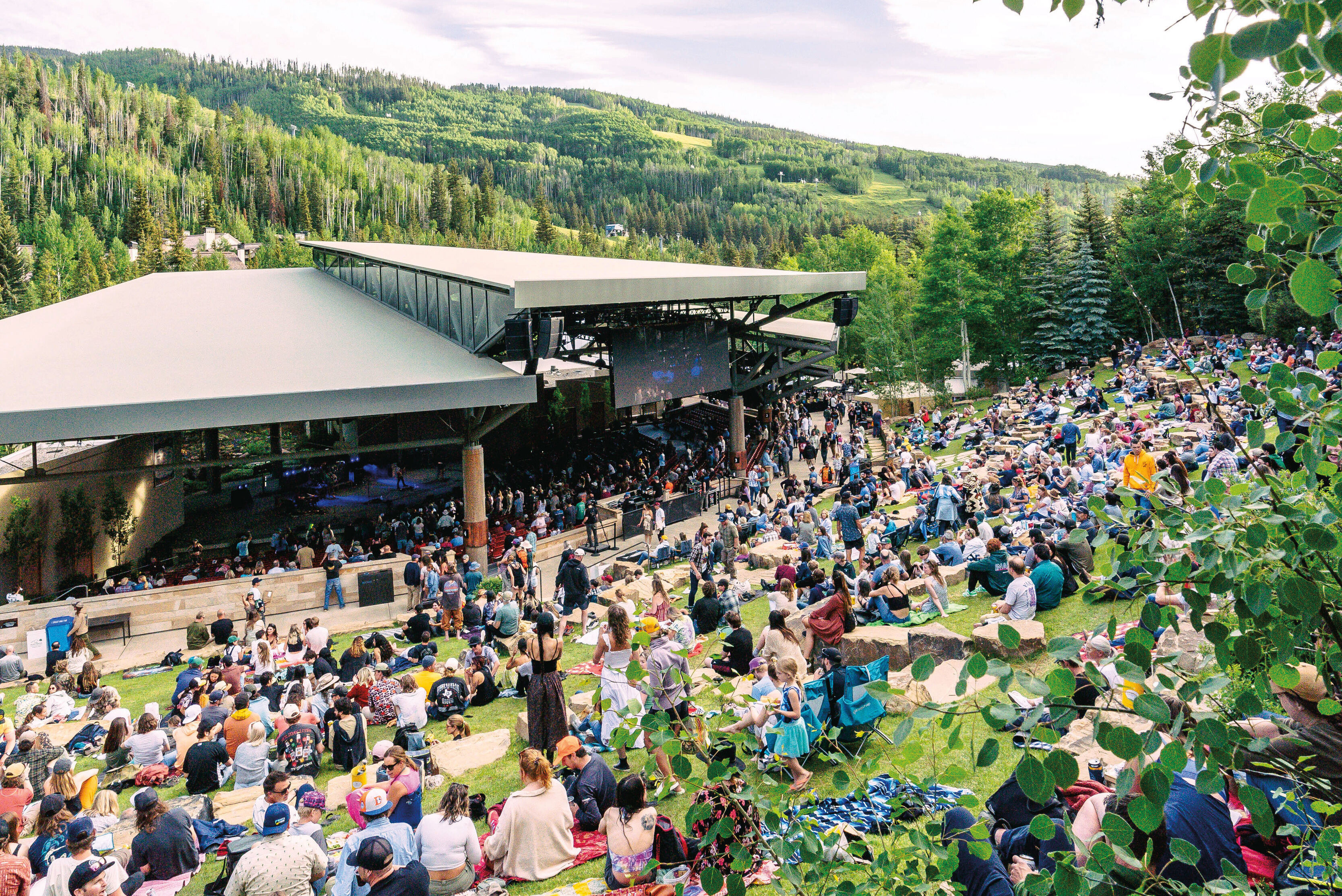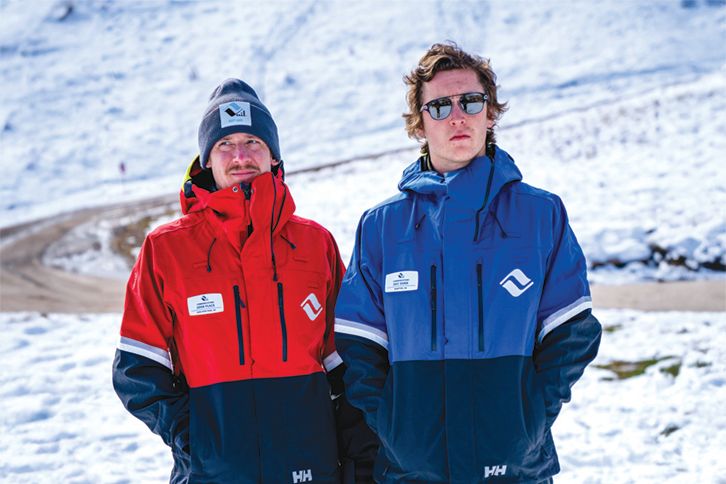Getting to Know Vail Pass
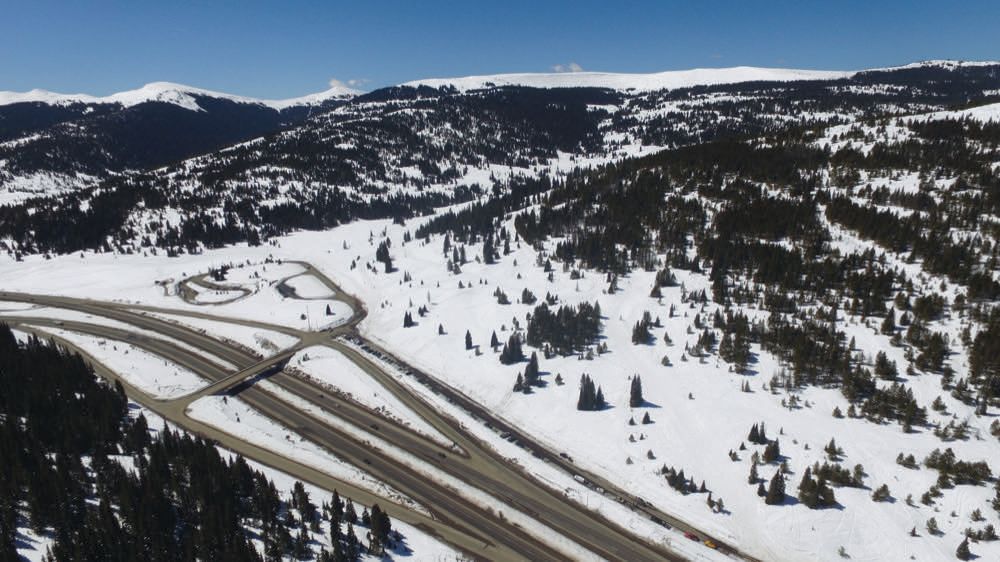
A bird's-eye of the interstate access to Vail Pass.
Image: Zach Mahone
It wasn’t until we neared the ridge that the majesty of Vail Pass revealed itself in full. Four of us, all skiers using climbing skins to ascend, emerged from the pine forest one by one. I was second. It was like the clouds had parted: suddenly we could see wide, sparkling meadows and alpine summits stretching in every direction. And weaving its way through the middle of our daydream was the heavily trafficked four-lane road—Interstate 70—that links much of America, not to mention neighboring Summit and Eagle counties and the Denver metro area, to Colorado’s most-iconic mountains.
How can such recreational splendor exist literally steps from a superhighway rest stop?
That, of course, is the magic of the place.
Located off Exit 190 just 10 miles east of East Vail, Vail Pass sits at an elevation of 10,662 feet in the eastern half of the 2.3-million-acre White River National Forest (WRNF), which happens to be the most-frequented forest in the country, with more than 13 million visitors last year. The Vail Pass Winter Recreation Area encompasses 55,000 acres of said forest on the north and south sides of I-70—roughly the size of 10 Vail Mountains—and saw 36,000 visitors in 2015. That may not sound like a lot, especially when compared to daily skier traffic on Vail Mountain, but it is plenty to tax a high-alpine ecosystem as pristine and fragile as this.
This is why Vail Pass checks another superlative box as the most heavily managed US Forest Service recreation zone in Colorado, complete with pay-to-play fees, regularly enforced boundaries for motorized and nonmotorized use, and, of course, never enough parking (space for 50 snowmobile trailers, and 80 spots for other vehicles). This delicate management balance did not evolve overnight, nor without anguish among its various user groups, who have been sharing the area for more than four decades, sometimes more peacefully than others. But it is the reason why a mecca for so many—including snowmobilers, backcountry skiers and snowboarders, snowshoers, hut trippers, snowcat operators, and, in a bygone era, even a helicopter ski operation—has remained open to all.
“Vail Pass is a world-class destination, and our whole goal is multiple uses,” says Adam Bianchi, deputy district ranger for the Forest Service’s Dillon Ranger District, which shares management of the pass with the Eagle-Holy Cross Ranger District. “We want to help people do what they love to do, in a way that is sustaining the ecosystem through our management. You don’t see a lot of places like this.”
Up until 1940, most motorists traveled between Summit and Eagle counties via Shrine Pass, a rutted dirt track just south of Vail Pass that leads to the town of Red Cliff. Then Highway 6 was built using the same route that would eventually become the I-70 corridor over Vail Pass. Usage of the pass among recreationists has been increasing ever since.
It is easy to see why. From the rest stop, the options are almost endless. Six distinct alpine huts for overnight adventures are accessible from the parking lot. Backcountry ski lines ranging from low-angle meadows to giant avalanche paths beckon in all directions. You can snowmobile for five hours and never cross your tracks. And professional guides are permitted to lead you on any adventure you wish to undertake (See our links to snowmobiling, huts, backcountry skiing/snowboarding and snowshoeing for more information).
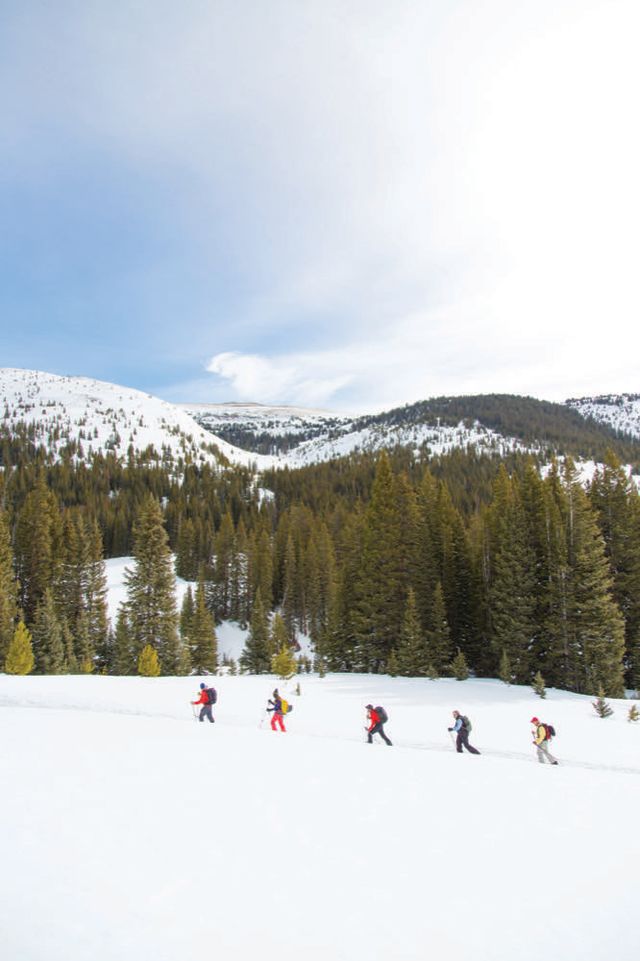
From the parking lot, the backcountry options are almost endless.
Image: Zach Mahone
In fact, the scene on the pass has become so structured and frenzied now that longtime users can’t help but chuckle or sigh—or both—while recounting how lackadaisical it once was. Soon after Donny Shefchik moved to Vail in 1979, he and his friends started ski touring on Vail Pass. “There was nobody up there back then,” says Shefchik, the 67-year-old field director for Paragon Guides, which runs ski and snowshoe tours and leads hut trips on the pass. “The Forest Service wasn’t charging fees. Even in the early eighties, I won’t say it was rare to see snowmobiles on the south side of the pass, but there were times that we used to do the Commando run to Vail”—a grueling backcountry ski route from Vail Pass to the town of Vail—“and we were breaking trail up the road because there hadn’t been anyone up there. For years, we thought of it as almost our own place. There were just so few people.”
That changed later in the eighties as more skiers and snowmobilers discovered it and hut trips became popular. According to Rich Doak, the longtime WRNF staff officer for recreation, user conflicts began to be problematic around 1988. Nonmotorized users complained about snowmobiles infringing on their quiet and buzzing them on purpose. Hut trippers would slog into a hut and find their ski terrain tracked out by machines. Snowmobilers, meanwhile, didn’t appreciate having to weave around slow-moving obstacles on roads that led to deeper destinations. “Goal interference,” Doak calls the conflict.
Something had to be done.
A major first step came in the 1990 founding of the Vail Pass Task Force, a nonprofit organization with representatives from different user groups that helps manage the area and now grooms more than 50 miles of roads and trails. Still, conflicts persisted. Segregation seemed like the only solution.
In the early nineties, the Forest Service convened a meeting between motorized and nonmotorized users. “They said, ‘You guys split this up as best you can, and if you can’t do it, we’ll do it for you,’” recalls Chuck Ogilby, a longtime Vail developer who conceived and built the Shrine Mountain Inn, a trio of backcountry cabins a few miles south of Vail Pass. “So they forced the two sides to do it fairly, and it actually happened. By 1997, that map had been painfully, and I tell you painfully, divided.”
Coincidentally, Congress passed the Recreation Enhancement Act in 1996, allowing the Forest Service to charge a fee for recreational use of the land it managed. By December 1998, the pay-to-play model was in place on Vail Pass. Visitors now pay $6 for day use and $40 for a season pass to recreate in the 55,000 acres.
Access works like this: the north side of the pass (a backcountry skiing and snowshoeing nirvana including Uneva Peak) is reserved exclusively for nonmotorized use, while the south side (including the Shrine Mountain Inn huts and Shrine Ridge) encompasses various zones open to motorized use and others reserved for human-powered travel. “It’s not a straight line; there’s a lot of pods and pockets and bubbles of motorized and nonmotorized terrain on the south side,” says Teddy Wilkinson, the Forest Service’s interim lead ranger on Vail Pass. To help police these boundaries, Wilkinson and other rangers hand out free color-coded maps at the parking lot, where they also collect fees and direct motorists to maximize parking opportunities, as well as share pertinent safety information including the daily avalanche report. On many weekend days in the winter, Wilkinson says, the parking lot fills up by midmorning and visitors are left waiting in line for spots that may not open for hours.
Of course, if you wish to avoid the hullabaloo on the pass, you can also access the 55,000-acre winter rec area from Camp Hale and Red Cliff off of Highway 24, as many outfitters and savvy visitors now do. Such evolution is part of the growth. This year, for the first time, the Task Force—which operates on a $200,000 budget, comprised mostly of Forest Service user fees—began grooming snowmobile trails seven nights a week. Users have learned to work together out of necessity. “It’s actually a beautiful thing,” Ogilby says.
Still, everyone involved knows the future will be even trickier to manage. In early December, the Task Force met with forest supervisor Scott Fitzwilliams to discuss how to handle more people on Vail Pass (one proposal: increase day-use rates to $9 per day and season passes to $100). Also on the table: reservations for parking, and a cap on visitation. Ogilby isn’t sure what will happen, but he is hardly surprised by the questions.
"We knew it was coming, because Vail Pass is absolutely spectacular,” he says. “Yes, it’s busy. But the beauty of it is still there, even though you’re sharing it with lots of other people.”



